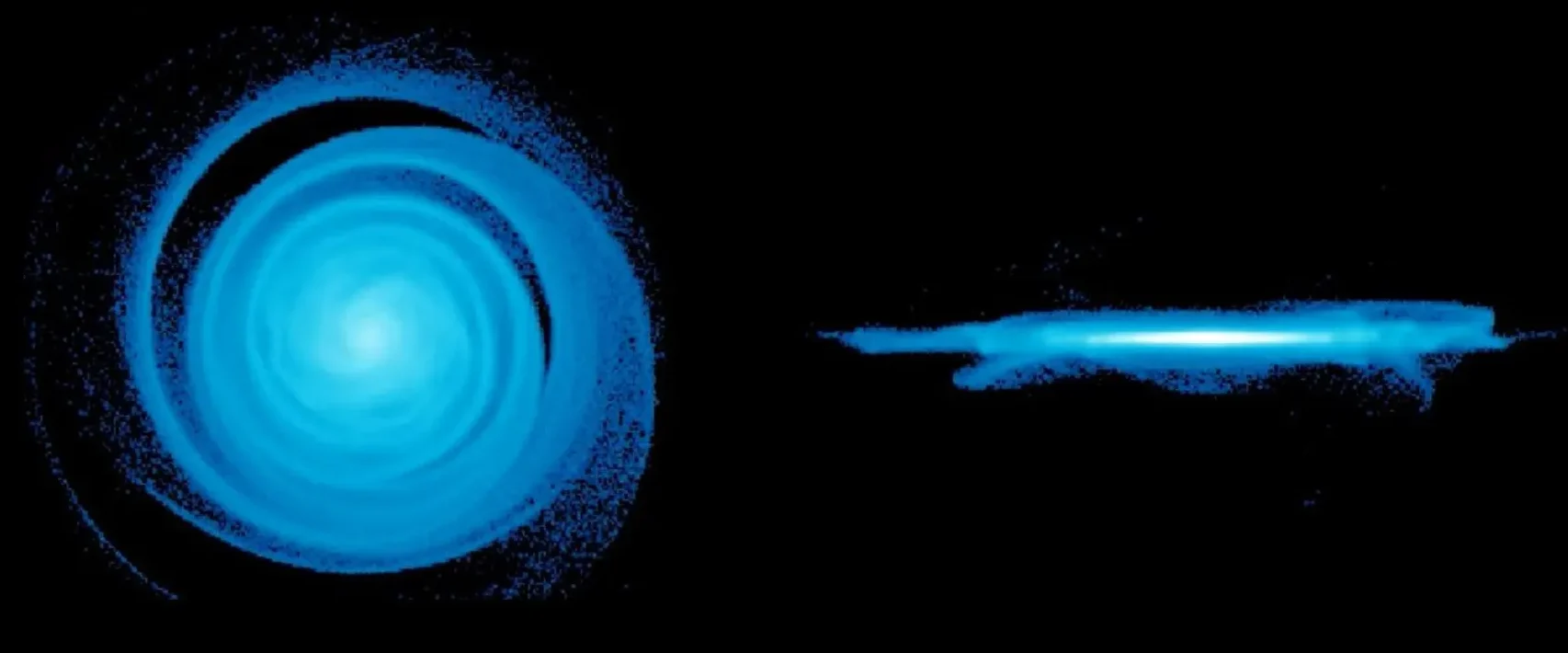Astronomers Uncover Seismic Ripples in Oldest Known Spiral Galaxy with ALMA's Aid
The Atacama Large Millimeter/submillimeter Array (ALMA) has enabled a team of scientists led by Dr. Takafumi Tsukui to observe seismic-like ripples in the ancient galactic disk of BRI 1335-0417, the oldest known spiral galaxy at over 12 billion years old. This unprecedented observation reveals the galaxy's dynamic growth patterns, showcasing a vertically oscillating disk movement similar to ripples on a pond. The study, recently published in the Monthly Notices of the Royal Astronomical Society, marks the first time such phenomena have been detected in an early galaxy.
This movement could result from external influences like incoming gas or interactions with smaller galaxies, both crucial for star formation. The research also unveiled a bar-like structure within the galaxy, the most distant of its kind ever observed, which plays a significant role in transporting gas to the galaxy's center.
The rapid star formation rate of BRI 1335-0417 is a few hundred times faster than in modern galaxies like the Milky Way. Understanding the mechanisms behind this rapid rate is crucial, especially as spiral structures in early universes are rare, and their formation remains a mystery.
ALMA's unique configuration of 66 antennas was instrumental in this discovery, offering a detailed view of a galaxy billions of light-years away, providing a snapshot of the Universe when it was just 10 percent of its current age.
Additional Information
This image release is based on a Press Release by the Australian National University (ANU).
ALMA is a partnership of ESO (representing its member states), NSF (USA) and NINS (Japan), together with NRC (Canada), NSTC and ASIAA (Taiwan), and KASI (Republic of Korea), in cooperation with the Republic of Chile. The Joint ALMA Observatory is operated by ESO, AUI/NRAO and NAOJ.
Images


Contacts
-
Nicolás Lira
Education and Public Outreach CoordinatorJoint ALMA Observatory, Santiago - ChilePhone: +56 2 2467 6519Cel: +56 9 9445 7726Email: [email protected] -
Naoko Inoue
EPO officer, ALMA ProjectNational Astronomical Observatory of Japan (NAOJ)Email: [email protected]



